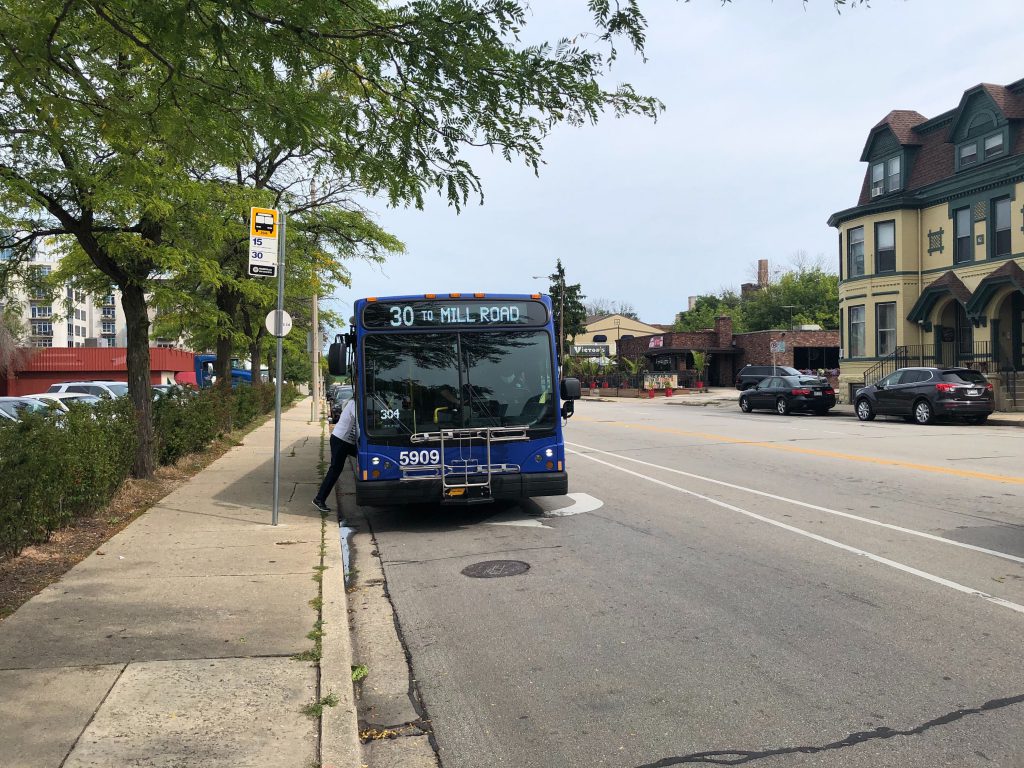County Bus System Up By 1 Million Rides
MCTS hits 8.4 million rides this year, a big increase, but still far behind pre-pandemic levels.
The Milwaukee County Transit System (MCTS) has struggled against the massive drop in ridership that occurred when the COVID-19 pandemic arrived in Milwaukee.
And while the pandemic is not entirely over, ridership has been slowly returning to the system as more of daily life begins to resemble what it was before the pandemic.
“We are grateful to our riders, our operators, and our community for choosing public transit,” said Kristina Hoffman, MCTS director of marketing and communications. “We want riders to know that they are playing a major role in MCTS’s road to recovery.”
“MCTS attributes the increase to a combination of trends including the expansion of high-frequency service begun last year with MCTS NEXT, unpredictable gas prices and more people returning to the office,” an MCTS statement said.
It also noted that its annual survey indicated that social and recreational use of the bus system is up 5% compared to last year. Paratransit, which is a service for people who are unable to use fixed route bus because of a disability, saw its ridership increase 27%, according to MCTS.
Riders have been gradually returning for more than a year. In 2021, the transit system saw ridership go up 13% during the summer and fall, compared to the year prior.
Ridership went off a cliff in 2020, but it had been flagging for years. In 2016, the transit system provided more than 40 million rides. Three years later, in 2019, it provided just nearly 29 million rides. And the decline had been steady during the intervening years, with the transit system reporting approximately 34 million in 2017 and 30 million in 2018.
The transit system, like so many other services provided by Milwaukee County, has been constricted by the long-term stagnation in state funding despite annual inflationary increases in the cost to do business as usual.
Between 2016 and 2020, the transit system saw the number of routes it operates go from 59 to 48 and the number of bus stops from more than 5,582 to 4,591.
In March, the Office of the Milwaukee County Comptroller released a five-year financial forecast for the county. In it, the comptroller estimates that when the federal relief funding dumped into the transit system during the pandemic runs out the system will be faced with a $32.9 million budget deficit. If this deficit is closed with budget cuts, it will be a 20% cut, based on the 2022 MCTS budget.
A May report by the Milwaukee County Department of Transportation (MCDOT) laid out the options available to close the budget gap. Ultimately, it found that the gap can’t be closed without harming the system or making changes that are deeply unpopular both politically and with the public.
“Recovering the riders lost due to the pandemic shows transit is an essential, everyday service for Milwaukee County residents and points to the need for a well-funded transit system to keep Milwaukee County healthy, growing, and contributing to the success of the region,” Hoffman said. “Currently, we face an upcoming fiscal cliff that will force us to make difficult decisions unless long-term funding solutions can be identified at local, state and federal levels.”
MKE County
-
Prosecution Rests Case in Dugan Trial
 Dec 17th, 2025 by Graham Kilmer
Dec 17th, 2025 by Graham Kilmer
-
Chief Judge Questioned About ICE Policy, Texts, Emails in Dugan Trial
 Dec 17th, 2025 by Graham Kilmer
Dec 17th, 2025 by Graham Kilmer
-
Fellow Judge Testifies in Dugan Case
 Dec 16th, 2025 by Graham Kilmer
Dec 16th, 2025 by Graham Kilmer
Transportation
-
Congestion Pricing Cuts Air Pollution in New York City
 Dec 14th, 2025 by Jeff Wood
Dec 14th, 2025 by Jeff Wood
-
FTA Tells Milwaukee to Crack Down on Fare Evasion — Even Where Fares Don’t Exist
 Dec 12th, 2025 by Graham Kilmer
Dec 12th, 2025 by Graham Kilmer
-
Will GOGO’s Bus Service Ever Get Going?
 Dec 9th, 2025 by Jeramey Jannene
Dec 9th, 2025 by Jeramey Jannene


















